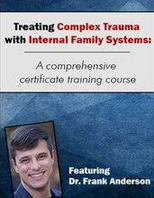How disapproval gets lodged in the nervous system. How to reprocess the formative memories that create a core inadequacy. What happens to the limbic system when implicit memories are released. How to overwrite the mind-body imprint of a client’s early childhood experiences…
NICABM – Working With Core Beliefs of “Never Good Enough”
Practical Strategies For Working With a Client’s Feelings of Worthlessness
To help clients shift out of these painful core beliefs, we need to:
know why the ruminating brain embellishes feelings of self-contempt
understand the specific biological factors that fuel inadequacy
understand how self-criticism roots itself in the body
address the one overlooked fear that directly links feelings of “never good enough” to depression
So we asked 17 of the top experts in the field how they work with feelings of inadequacy. This is the result.
Working With Core Beliefs of “Never Good Enough”
Three Tools to Help Clients Reverse a Sense of Worthlessness
Marsha Linehan, PhD Kelly McGonigal, PhD Ron Siegel, PsyD
One assessment that can shift a client’s feelings of inner deficiency
How to identify where the client is inviting others’ judgment (and how to help them see it)
A Bottom-Up Approach to Working With Implicit Memories of Inadequacy
Pat Ogden, PhD Kelly McGonigal, PhD
How disapproval gets lodged in the nervous system
How to reprocess the formative memories that create a core inadequacy
What happens to the limbic system when implicit memories are released
How to overwrite the mind-body imprint of a client’s early childhood experiences
How to Help Clients Internalize Positive Experiences
Rick Hanson, PhD Ron Siegel, PsyD
Kelly McGonigal, PhD Bill O’Hanlon, LMFT
The 2 essential elements that result in a healthy sense of worth
How the endocrine system may prevent the “landing” of beneficial experiences
How to Help Shift the Self-Critical Mind
Linda Graham, LMFT Bill O’Hanlon, LMFT
Why feelings of inadequacy affect neuroplasticity
How shame’s effect on the nervous system creates negative beliefs
One important thing a client has to believe before their thinking will shift
How to Resource Clients Against Toxic Self-Judgment
Shelly Harrell, PhD Kelly McGonigal, PhD
Why connecting a client to their values is ineffectual unless you follow it with this step
One practical method that helps clients cultivate a sense of dignity
How to Help Clients Heal From Deeply-Internalized Judgment
Steven Hayes, PhD Ron Siegel, PsyD
Kelly McGonigal, PhD Joan Borysenko, PhD
One crucial part of our cognition that makes us prone to self-judgment
The one change of perspective that reframes a client’s critical thoughts
Why you shouldn’t try to disprove early feelings of inadequacy
How to Repair an Attachment History That Fosters Self-Loathing
Sue Johnson, EdD
How to minimize the client’s risk when they confront the root of their self-contempt
Why we need to help clients clarify their “I’m defective” message
One Life-Changing Antidote for a Root Sense of Unworthiness
Joan Borysenko, PhD Kelly McGonigal, PhD
How to help clients detach from “worthless worm syndrome”
One selfless act that can reverse pervasive feelings of “never good enough”
How to Approach Unrealistic Expectations of Perfection
Michael Yapko, PhD Ron Siegel, PsyD
Kelly McGonigal, PhD Joan Borysenko, PhD
How to help clients shift toward being effective over being right
How to help clients develop immunity from others’ approval (and disapproval)
Read more: http://archive.is/YLLER








